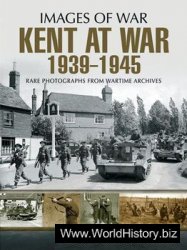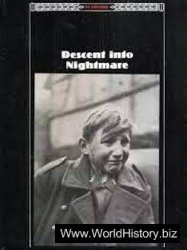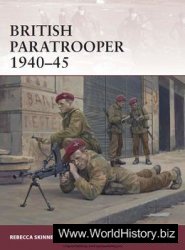Presenting a snapshot of all of Europe in 1450 in one chapter is very diffi cult, particularly
a “Europe” that is geographically and socially broad and diverse. This diversity
means, in fact, that a counter-example could be found somewhere in Europe for nearly
every sentence in this chapter. We can make some generalizations, however. Most
people lived in small villages in households organized around a marital couple, supporting
themselves and paying their obligations to their superiors through agricultural
production. They never traveled very far, and those who did were generally merchants
trading luxury goods over land and sea routes, or pilgrims visiting holy sites. Cities
were growing in many parts of Europe, however, especially the Low Countries and
Italy, and urban dwellers ranged across a broad socio-economic spectrum. The nobility
remained the dominant group in European society, both in areas in which nationstates
were slowly coalescing, such as England and France, and in those that remained
politically divided, such as Germany and Italy. In 1453, the Ottoman Empire captured
Constantinople and continued its expansion into southeastern Europe, and England
and France ended a protracted war with one another in which England lost almost all
of its holdings on the continent. The invention of the printing press with movable metal
type spurred the expansion of literacy in vernacular languages, although only a small
proportion of the population could read. Advanced education was in Latin, either at
universities that trained male students in law, medicine, and theology, or at the new
humanist academies that trained young men for a career in business or politics. The
Christian church in central and western Europe was a wealthy, hierarchical, bureaucratic
institution headed by the pope, in which bishops held a signifi cant amount of
power. Most people living in Europe were Christian, and engaged in a variety of religious
rituals throughout the year and across their life-spans, as did Jews and Muslims.
Production of most commodities was organized through urban craft guilds, but clothmaking
and mining were increasingly organized along capitalist lines, with an investor
providing the fi nancial backing for machinery, tools, and raw materials, and workers
paid wages for their labor. Along with the printing press, the most signifi cant technological
development was the increasing use in sea and land warfare of gunpowder,
which had been invented in China and spread westward by the Mongols.
The rest of the book will allow you to explore the topics set out in this chapter
more fully, tracing social, political, intellectual, religious, economic, and technological
changes and continuities. It may be harder to keep continuities in mind than to
investigate changes, as continuities seem to require less explanation and are generally
not as exciting or noticeable, particular when studying a period understood as “the
birth of modernity.” Many people living in this era, however, would not have been
startled by what they saw around them had they been suddenly transported from 1450
to 1789; the fi nal chapter of this book will help you assess what was really different, and
for whom.
QUESTIONS
1 How did travel and trade shape the
European economy and society in the
fourteenth and fi fteenth centuries?
2 What were the primary social hierarchies
in fi fteenth-century Europe, and how
did these shape people’s opportunities in
education, work, and religious life?
3 In what ways were secular institutions of
power similar to those of the Christian
church in Europe in 1450? In what ways
were church and state different?
4 How did Christians, Jews, and Muslims
in Europe express their religious devotion,
and how did these activities shape
the calendar and the landscape?
5 How was life in cities different from that
in rural areas? How was it similar?
FURTHER READING
For good overviews of the later Middle Ages, see David Herlihy , The Black Death and the
Transformation of the West ( Cambridge, MA : Harvard University Press , 1997); Maurice Keen,
English Society in the Later Middle Ages, 1348–1500 ( New York : Penguin Books , 1990); John
Aberth, From the Brink of the Apocalypse: Confronting Famine, War, Plague, and Death in
the Later Middle Ages ( London: Routledge, 2001). Two important collections with chapters on
many topics are Thomas A. Brady , Jr. , Heiko A. Oberman, and James Tracy , eds., Handbook of
European History in the Later Middle Ages, Renaissance and Reformation, 1400–1600, 2 vols.
(Leiden: E. J. Brill , 1994 and 1996) and Christopher Allmand, ed., New Cambridge Medieval
History, vol. VII: c. 1415–c. 1500 ( Cambridge: Cambridge University Press , 1998).
Books that focus on European encounters with others before Columbus include Felipe
Fernández-Armesto , Before Columbus: Exploration and Colonization from the Mediterranean
to the Atlantic, 1229–1492 ( London: Macmillan Education , 1987); Janet Abu-Lughod, Before
European Hegemony: The World System, AD 1250–1350 ( New York : Oxford University Press ,
1989); Jerry Bentley , Old World Encounters: Cross-Cultural Contacts and Exchanges in Pre-
Modern Times ( New York : Oxford University Press , 1993).
For political developments, see Denys Hay , Italy in the Age of the Renaissance, 1380–1530
(New York : Longman, 1989); C. A. J. Armstrong , England, France and Burgundy in the
Fifteenth Century ( London: Hambledon, 2003); James Muldoon, Empire and Order: The
Concept of Empire, 800–1800 ( London: Palgrave-Macmillan, 1999).
For late medieval urban life, see Charles Phythian-Adams, Desolation of a City: Coventry
and the Urban Crisis of the Late Middle Ages ( Cambridge: Cambridge University Press , 2002);
David Nicholas, Urban Europe 1100–1700 ( London: Palgrave-Macmillan, 2003); Katherine A.
Lynch , Individuals, Families, and Communities in Europe, 1200–1800: The Urban Foundations
of Western Society ( Cambridge: Cambridge University Press , 2003).
For religion, see Eamon Duffy , The Stripping of the Altars: Traditional Religion in England,
1400–1580 ( New Haven : Yale University Press , 1992); Robert N. Swanson, Religion and Devotion
in Europe, c.1215 –c.1515 ( Cambridge: Cambridge University Press , 1995); Norman Housley ,
Religious Warfare in Europe, 1400–1536 ( Oxford : Oxford University Press , 2002); Andrew D.
Brown , Church and Society in England, 1000–1500 ( London: Palgrave-Macmillan, 2003).
For economic and social changes, see Christopher Dyer , Standards of Living in the Later
Middle Ages: Social Change in England c. 1200–1520 ( Cambridge: Cambridge University
Press , 1989); Ruth Mazo Karras, From Boys to Men: Formations of Masculinity in Late Medieval
Europe ( Philadelphia: University of Pennsylvania Press , 2002); Tim Parks, Medici Money:
Banking, Metaphysics, and Art in Fifteenth-Century Florence ( New York : W. W. Norton , 2005).
For more suggestions and links see the companion website www.cambridge.org/wiesnerhanks .
NOTE
1 From Aeneas Sylvius Piccolomini, Historia Frederici III imperatoris, translated and reprinted in
James Bruce Ross and Mary Martin McLaughlin, The Portable Renaissance Reader ( New York :
Penguin/Viking , 1953), pp. 208, 209, 211, 212.




 World History
World History
![Road to Huertgen Forest In Hell [Illustrated Edition]](/uploads/posts/2015-05/1432477693_1428700369_00344902_medium.jpeg)








